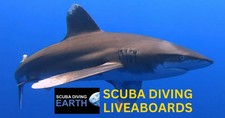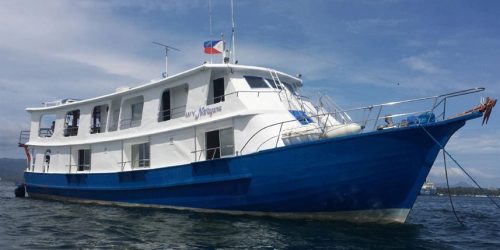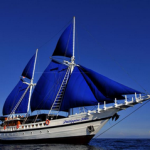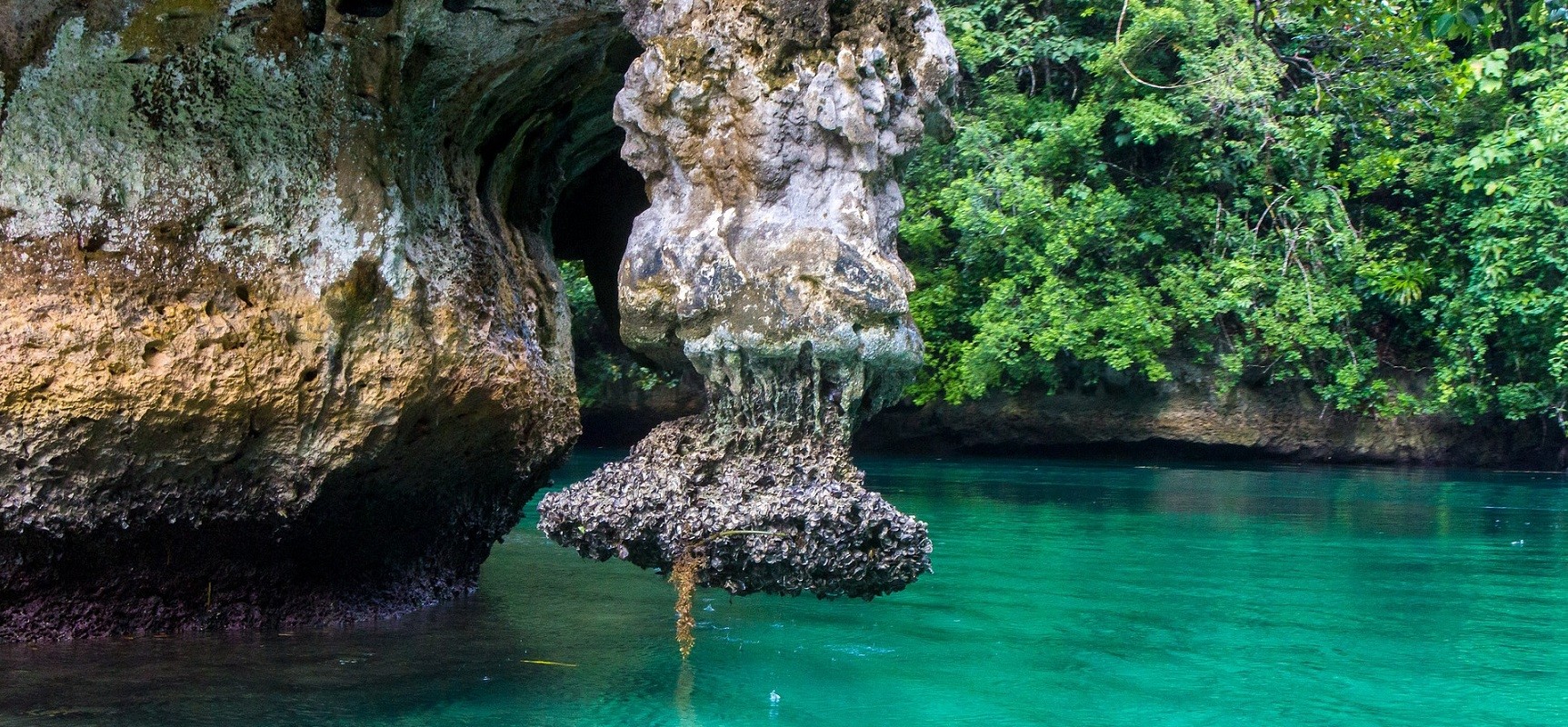
Philippines Liveaboard Diving
Liveaboard Diving On Pristine Reefs With Whale Sharks And Hammerheads In The Coral Triangle
Popular Philippines Liveaboards
| MY Infiniti; Liveaboard diving in Philippines; 9.2 out of 10 and is rated 'Superb'; from £191, $233, €218/day. Customer Review: “Fantastic first livaboard. There were many highlights of this trip. The reefs were pristine and there was a huge diversity of things to see. From the big stuff to a wide range of smaller things The entire crew from top to bottom was excellent. Brilliant to return from a dive to the lads waving and smiling on the dive deck. The trip to the ranger station for a look round and a couple of beers was fun. The food was really enjoyable . Good range of option and a special mention to the deserts. Things which might have been extras on other boats like nitrox and beers were all included. Give the amount of both I consumed this was a good thing. Plenty of room in the cabins, the lounge and the sun deck. All in all a really enjoyable trip.” Recommended for: Friendly helpful crew. Great dive sites. Comfortable boat. |
| MY Solitude One; Liveaboard diving in Philippines; 9.2 out of 10 and is rated 'Superb'; from £218, $266, €249/day. Customer Review: “A top class alternative to the Palau Siren which was out of commission at this time. This was an alternative to Palau Siren which had run aground a few months earlier.and was still unavailable.Whilst very different in its layout the facilities and staff were of a very high standard.If offered a free place on one or the other I would be hard pressed to choose.” Recommended for: food,variety of the dives and the heads. |
| MY Seadoors; Liveaboard diving in Philippines; 8.7 out of 10 and is rated 'Fabulous'; from £213, $260, €243/day. Customer Review: “Amazing tubbataha diving. The diving at Tubbataha is great – no people. All the big stuff – hammerheads, whalesharks, mantas, silver tip sharks (plus loads of grey reefs / white tips / schools of barracuda and jacks). Not so much macro. The dive guides are great – they find everything. And largely prepare and move all equipment for you (unless you want to do yourself). Food was amazing! The boat seems to largely attract an older audience (mostly aged 50 upwards). So positive, or less positive depending upon your own age!” Recommended for: Incredible diving. Amazing food. Great guides and staff. |
| MY Azalea Liveaboard; Liveaboard diving in Philippines; 8.8 out of 10 and is rated 'Fabulous'; from £100, $122, €114/day. Customer Review: “Cosy and enjoyable unlike bigger LOBs. Utterly satisfied with the entire crew. The Swedish family we travelled with were nice and friendly which makes the LOB cosy. I went on the LOB and actually forgot to bring the charger of my underwater camera. An American and his Philippino partner both had the same underwater camera and charger as me. I tried to borrow his charger twice but he needs to constantly use it and cannot lend to me at any point of time. Despite this, the entire crew and the rest of people on the LOB tried to find if they had any that could be used on my Olympus camera. Even though I could not take anymore pictures on the rest of my dive trip, everyone else and the crew were very nice.” Recommended for: Crew is good and attentive/ food is good / service is best. |
| MY Philippines Aggressor; Liveaboard diving in Philippines; 0 out of 10 and is not rated; from £244, $298, €278/day. Customer Review: |
| MY Narayana Liveaboard; Liveaboard diving in Philippines; 0 out of 10 and is not rated; from £214, $261, €244/day. Customer Review: |
TO SEE ALL PHILIPPINES LIVEABOARDS SCROLL TO THE TABLE BELOW
Liveaboard Diving in The Philippines
Philippines liveaboard diving offers the best scuba diving in the world around 7,107 islands, including whale shark dives at Oslob, thresher sharks at Malapascua and hammerheads, tiger sharks, whitetip sharks, turtles, manta rays, and eagle rays at Tubbataha Reef National Park in the Coral Triangle.
Philippines liveaboard diving offers the chance to enjoy amazing corals, see whale sharks, encounter an abundance of marine life and dive on numerous wrecks too. The Philippines is located on the northern corner of the Coral Triangle, and is made up of 7,107 islands, which is spread across 300,000 square kilometres (115,000 square miles), and therefore means a great choice of dive sites.
Many of these islands can only be reached by Philippines liveaboard, such as Apo Island and Tubbataha Reef, which is in the world famous Tubbataha Reef National Park.
“The Tubbataha Reef Marine Park covers 96,828ha, including the North and South Atolls and the Jessie Beazley Reef. It is a unique example of an atoll reef with a very high density of marine species; the North Islet serving as a nesting site for birds and marine turtles. The site is an excellent example of a pristine coral reef with a spectacular 100-m perpendicular wall, extensive lagoons and two coral islands.
The reef ecosystems support over 360 species of coral and almost 700 species of fish.
The remote and undisturbed character of the property and the continued presence of large marine fauna such as tiger sharks, cetaceans and turtles, and big schools of pelagic fishes such as barracuda and trevallies add to the aesthetic qualities of the property.”
Unesco – Tubbataha Reef National Park.
The Philippines is home to over 1,200 species of marine life, which includes colourful macro species too. The Philippines is also known for many pelagic species of fish, and in particular thresher sharks, which can be seen around Malapascua Island.
Tubbataha Reef, which is 150 kilometres (94 miles) from land, is home to a variety of sharks and dolphin species, whereas Donsol, Oslob and Sogod Bay have become a destination known for the population of whale sharks there. The Philippines is also a place to spot seahorses and the beautiful mandarin fish.
Table of Philippines Liveaboards
This list of Philippines liveaboards is in descending customer rating order, so the liveaboards with the highest customer rating will be at the top of the list. To filter this table for the features that are important for your Philippines liveaboard trip, select from the list of filters below.
| Discover Liveaboard | Customer Reviews | Price Per Day | |
|---|---|---|---|
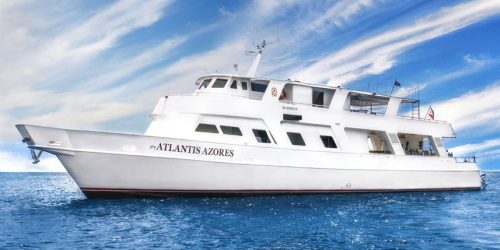 | Review: MY Atlantis Azores; Book: MY Atlantis Azores | 9.8 Exceptional | from £259; $316; €295 |
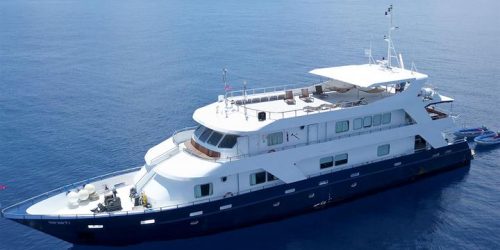 | Review: MY Infiniti; Book: MY Infiniti | 9.2 Superb | from £191; $233; €218 |
 | Review: MY Solitude One; Book: MY Solitude One | 9.2 Superb | from £218; $266; €249 |
 | Review: Philippine Siren; Book: Philippine Siren | 9 Superb | from £144; $176; €164 |
 | Review: MY Discovery Palawan; Book: MY Discovery Palawan | 9 Superb | from £208; $254; €237 |
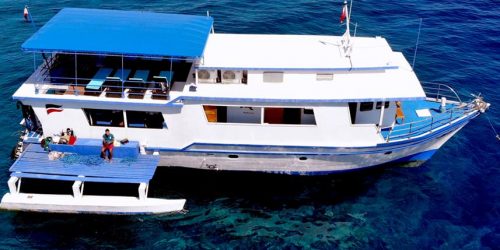 | Review: MY Azalea Liveaboard; Book: MY Azalea Liveaboard | 8.8 Fabulous | from £100; $122; €114 |
 | Review: MY Seadoors; Book: MY Seadoors | 8.7 Fabulous | from £213; $260; €243 |
- 1
- 2
Note: The above “Price Per Day” was correct at the time of producing this article, as was the exchange rate used to convert the GBP cost to US Dollars and Euros. For an up-to-date cost for your chosen liveaboard, please visit the “Book” link above.
Philippines Liveaboard Dive Sites
Liveaboard diving in Malapascua
Malapascua is off the north of Cebu and is where you can see thresher sharks, whitetip reef sharks, grey reef sharks, sea snakes, frogfish, seahorses, rays (including blue spotted rays and manta rays), turtles, nudibranchs and moray eels.
You can enjoy caverns and swim-throughs in this area, but be aware certain areas like Monad Shoal have strong currents, which beginner divers will not have experience to dive.
Liveaboard diving in Tubbataha Reef National Park
Liveaboard diving in Tubbataha Reef National Park is a World Heritage Site, and is regarded as one of the best places in the world to dive. Tubbataha Reef lies within the Coral Triangle, which is made up of Jessie Beazley Reef, North Atoll and South Atoll.
Tubbataha dive sites at the North and South Atolls and Jessie Beazley Reef often have strong currents, which is for experienced divers only who can handle currents. But where there are currents, you normally find a big diversity of marine life.
At Tubbataha Reef you have the chance to encounter whale sharks, hammerhead sharks, tiger sharks, whitetip reef sharks, lots of turtles, manta rays, eagle rays, marbled stingrays, dolphins, Napoleon wrasse, barracuda, bumphead parrotfish, thriving corals and large shoals of fish.
Best Time To Dive Philippines
The Philippines diving season is year-round and sea temperatures range from 23-30°C (73-86°F). There are two seasons in the Philippines, You have the dry season from March to June when sea temperatures are at their warmest, and you can get typhoons in the months of September to December.
The best time to dive to see whale sharks in the Philippines is March to May.
I hope you enjoyed this page about Philippines liveaboard diving
I’d love to hear from you. Tell us about your adventures of diving and snorkeling, in the comments below. Please also share your photos. Either from your underwater cameras or videos from your waterproof Gopro’s!
If this article hasn’t answered all of your questions. If you have more questions either about snorkeling or scuba diving (or specifically about Philippines liveaboard diving), please comment below with your questions.
There will also be many more articles about scuba diving (and snorkeling) for you to read and learn about these fabulous sports.
Have fun and be safe!
Select Another Liveaboard Location
| All Liveaboard Locations |
| Discreet Liveaboard Locations |
